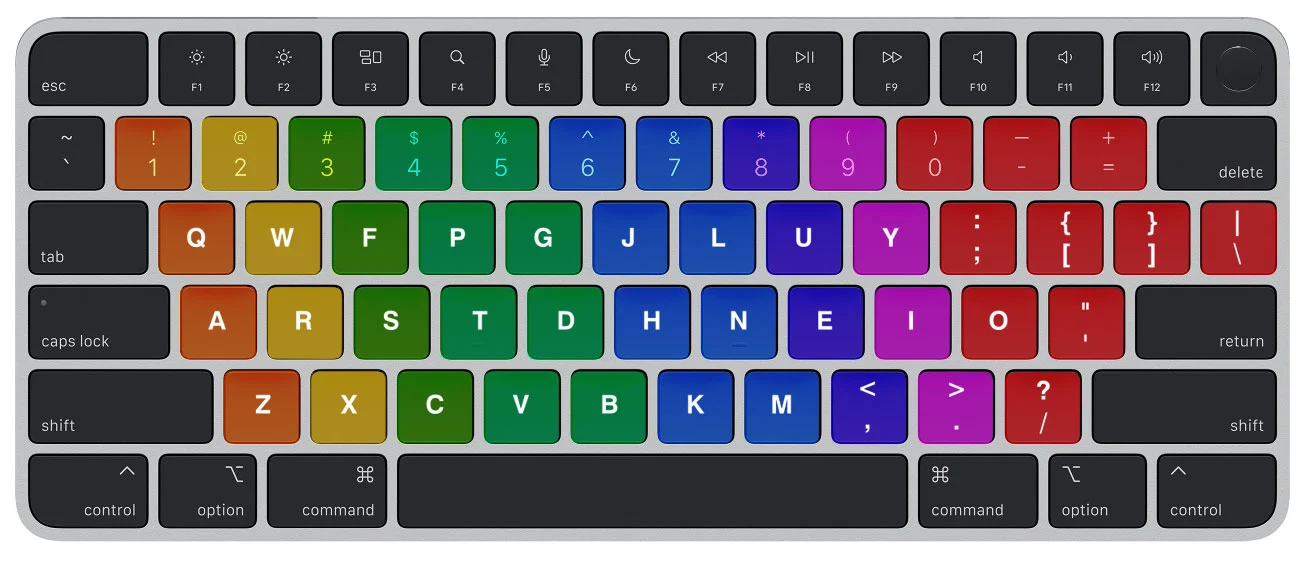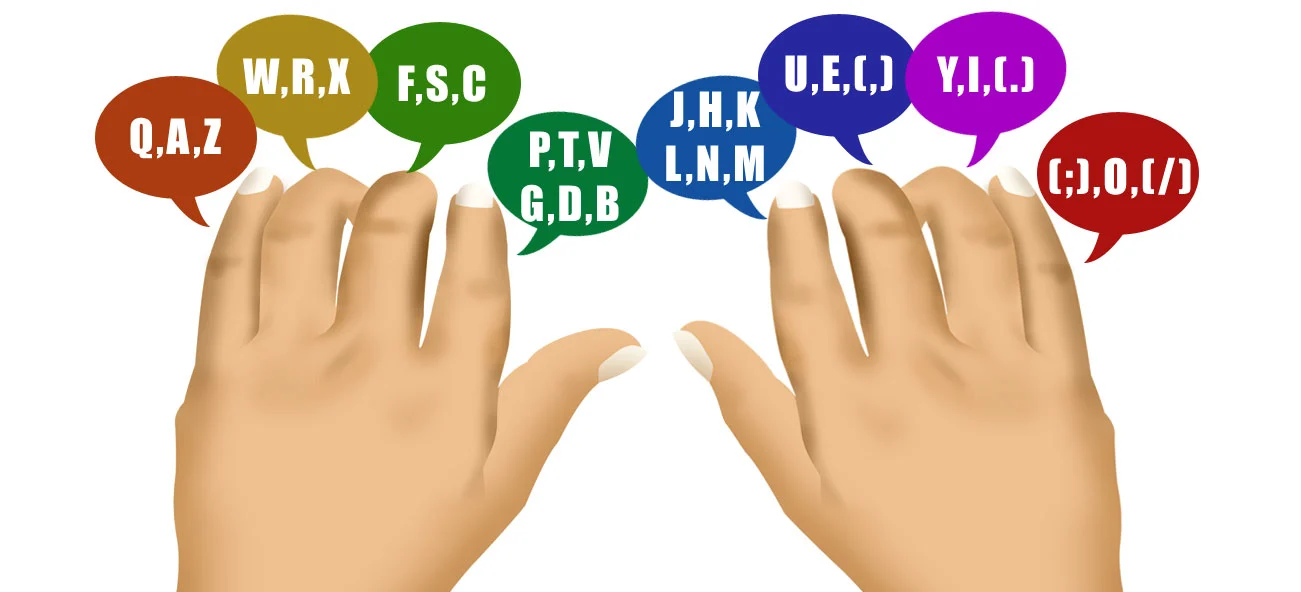Colemak keyboard training
Know the Colemak layout
The Colemak keyboard layout was developed in 2006 by Shai Coleman as a modern alternative to the traditional QWERTY and Dvorak layouts. Designed for increased typing efficiency and ease of learning, Colemak retains many familiar QWERTY key positions, making it easier to transition while reducing finger strain and enhancing speed. The layout strategically places the most commonly used keys on the home row, optimizing finger movement and improving typing comfort. Colemak has gained popularity among typists seeking a balance between familiarity and ergonomic efficiency.
Learn Colemak Typing

On the Colemak keyboard, the finger positioning is designed to maintain a balance between familiarity and improved ergonomics compared to the traditional QWERTY layout. Here’s how the fingers are positioned and the keys each finger is responsible for pressing:
Finger placements on home row keys
- Left Pinky: A
- Left Ring Finger: R
- Left Middle Finger: S
- Left Index Finger: T and D
- Right Index Finger: H and N
- Right Middle Finger: E
- Right Ring Finger: I
- Right Pinky: O
- Thumbs: Spacebar

Key Assignments by Finger
Left Hand
- Home Row: A
- Top Row: Q
- Bottom Row: Z
- Home Row: R
- Top Row: W
- Bottom Row: X
- Home Row: S
- Top Row: F
- Bottom Row: C
- Home Row: T, D
- Top Row: P, G
- Bottom Row: V, B
Right Hand
- Home Row: H, N
- Top Row: J, L
- Bottom Row: M, K
- Home Row: E
- Top Row: U
- Bottom Row: , (comma)
- Home Row: I
- Top Row: Y
- Bottom Row: . (period)
- Home Row: O
- Top Row: ; (semicolon)
- Bottom Row: / (forward slash)
Thumbs: Both thumbs are responsible for pressing the spacebar.
The Shift keys are pressed with the small fingers.
The Enter key is pressed with the right small finger.
The Backspace key is pressed with the right small finger or ring finger.
By following this finger positioning, you can improve your typing efficiency and reduce strain on your hands while using the Colemak layout.
Remember the Colemak layout is designed to minimize the movement required by your fingers, placing the most frequently used keys under your strongest fingers on the home row. Colemak retains many of the QWERTY key positions, particularly for less commonly used letters, making it easier to learn for those transitioning from QWERTY.
